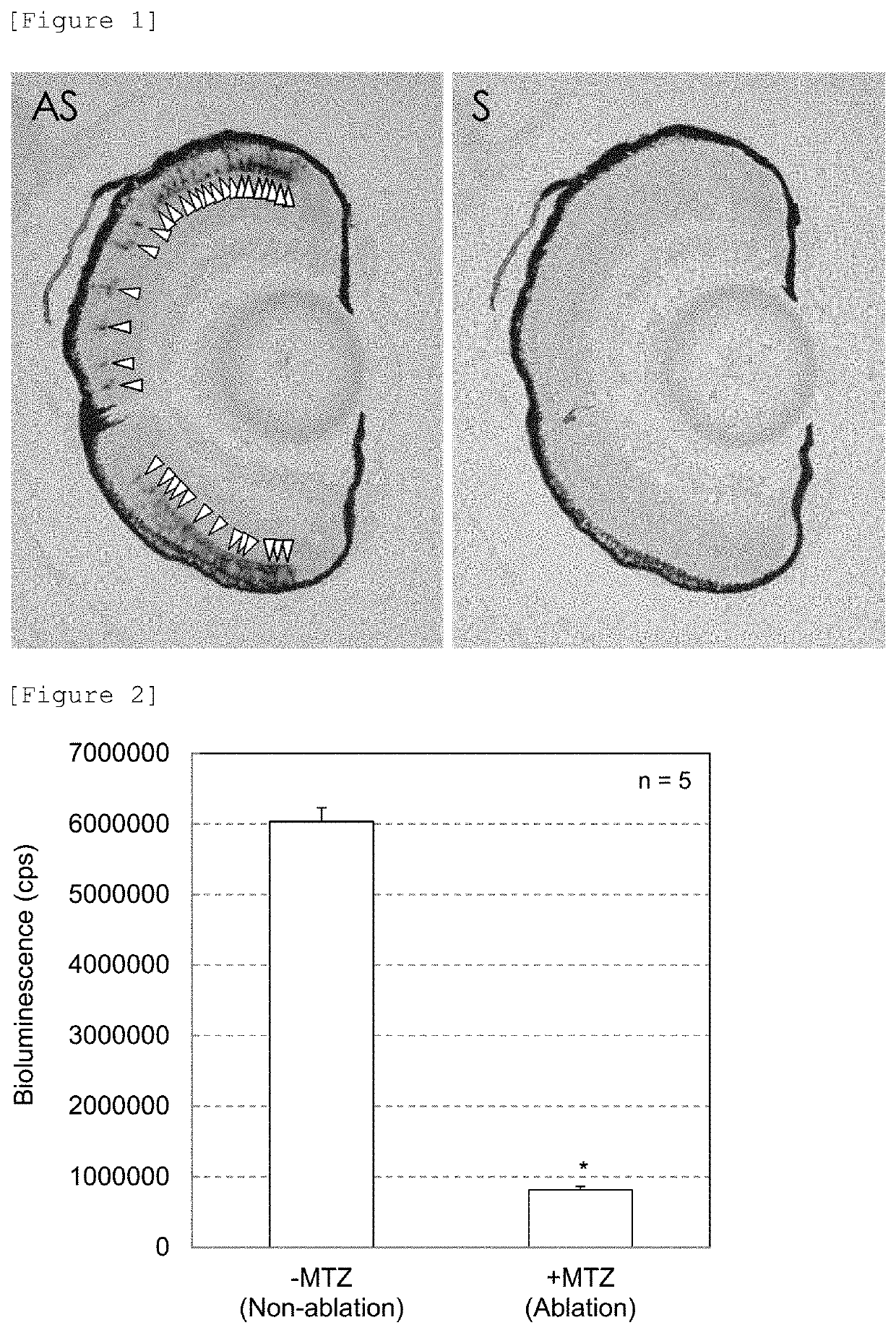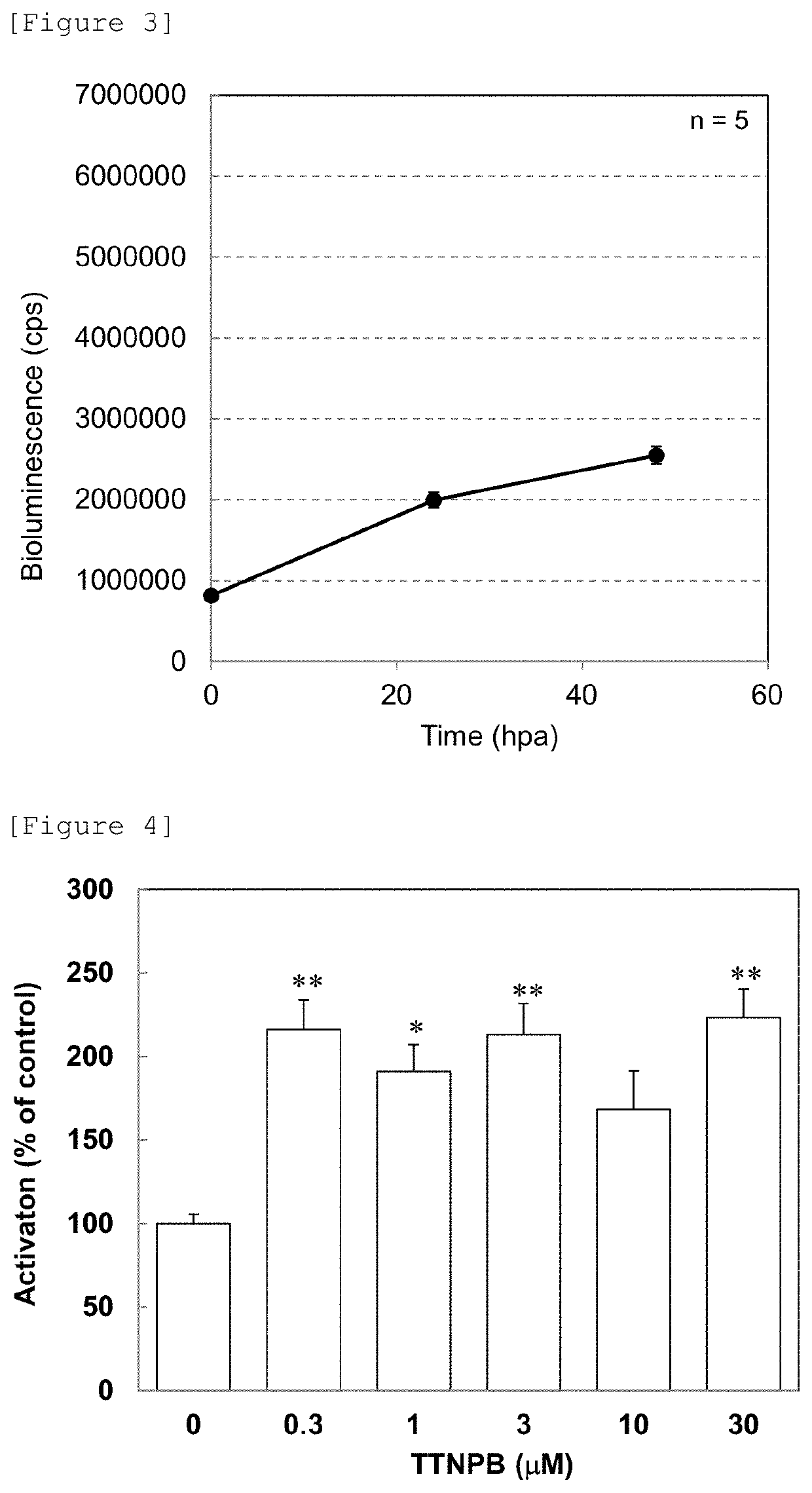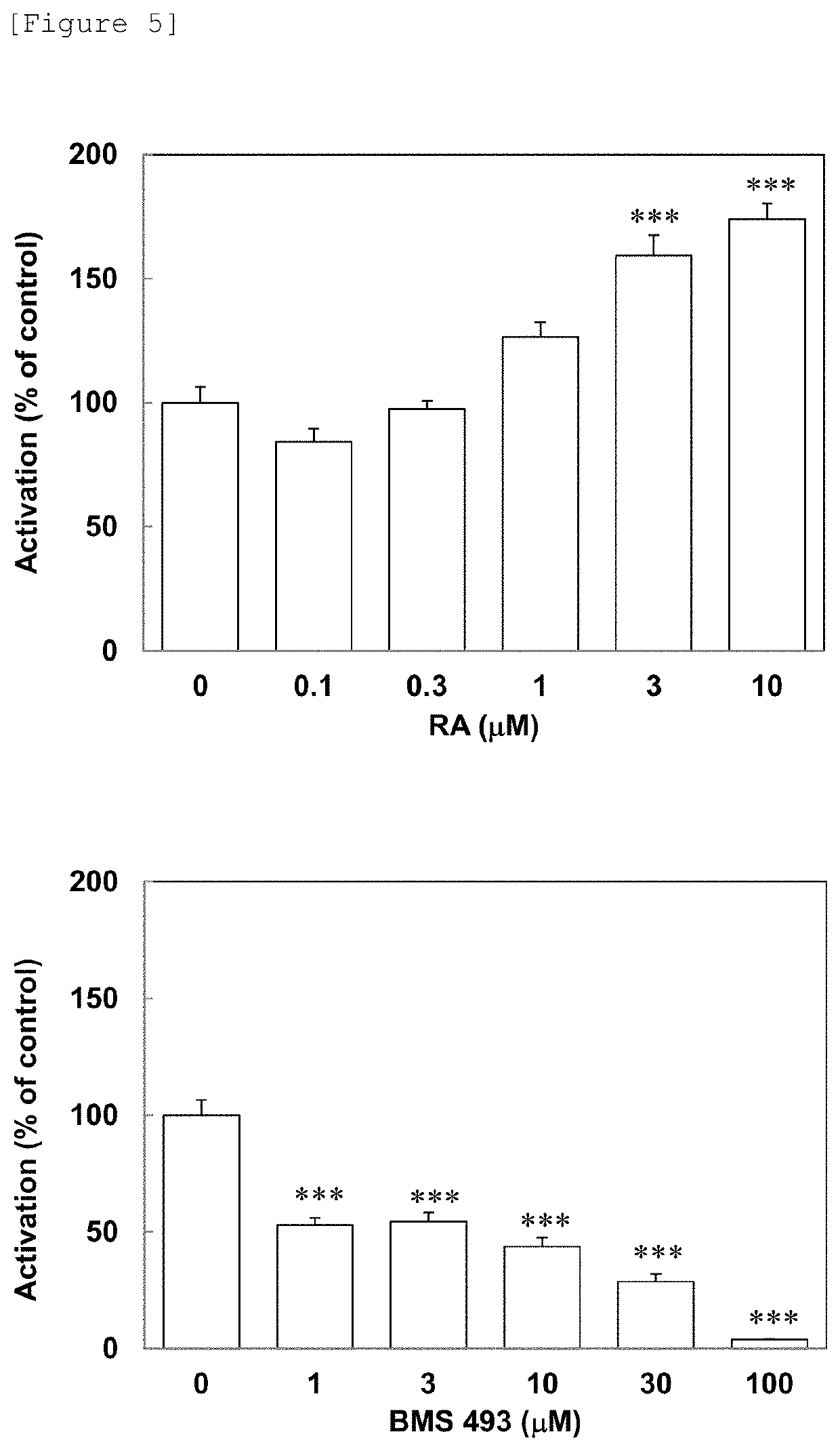Drug for retinal degenerative disease associated with photoreceptor degeneration
a retinal degeneration and photoreceptor technology, applied in the field of therapeutic and/or preventive can solve the problems of difficult to narrow down the target molecules for developing drugs, difficult to develop therapeutic drugs for retinitis pigmentosa, and reduced vision, so as to achieve the effect of preventing treatment and/or prevention, and increasing the number of rod cells
- Summary
- Abstract
- Description
- Claims
- Application Information
AI Technical Summary
Benefits of technology
Problems solved by technology
Method used
Image
Examples
example 1
Preparation of Plasmid pcDNA3.1-rho-ntr-nanoluc-my17-dsred2
[0173]To prepare transgenic zebrafish Tg (rho: NTR-NanoLuc, my17: DsRed2), first, plasmid pcDNA3.1-rho-ntr-nanoluc-my17-dsred2 was prepared using an In-Fusion (registered trademark) HD Cloning Kit. A method for forming a vector was carried out in accordance with the manual attached to the kit. The nucleotide sequences introduced herein are shown in SEQ ID NOs: 1 to 4.
example 2
Preparation of Transgenic Zebrafish Tg (rho: NTR-NanoLuc, my17: DsRed2) and Validation of Evaluation of Rod-Cell Regeneration Induction
[0174][Preparation of Transgenic Zebrafish]
[0175]Using plasmid pcDNA3.1-rho-ntr-nanoluc-my17-dsred2 prepared in Example 1, transgenic zebrafish Tg (rho: NTR-NanoLuc, my17: DsRed2) were prepared by the gene introduction method using I-SceI meganuclease (Soroldoni D, Hogan BM, Oates AC., “Simple and efficient transgenesis with meganuclease constructs in zebrafish.”, Methods Mol. Biol., 2009; 546: 117-130.). The specific procedure was as follows:
[0176]1) An injection solution was prepared by blending 1 μL of pcDNA3.1-rho-ntr-nanoluc-my17-dsred2 (712 ng / μL), 1.5 μL of Meganuclease buffer (10X), 0.6 μL of I-SceI (New England Biolab Japan Co., Ltd.; 5,000 units / mL), 1.5 μL of 0.5% phenol red (Sigma-Aldrich Japan) and 10.4 μL of dH2O.
[0177]2) To the cytoplasm of a single-cell embryo (fertilized egg) obtained from wild-type zebrafish, the injection solution ...
example 3
Screening of Compound and Evaluation of Activity of the Hit Compound
[0184]1. Screening of Compound
[0185][Procedure]Compounds were subjected to screening by use of transgenic zebrafish obtained in Example 2.
[0186]The procedure of the screening was as follows:
[0187]1) On the day before collection of eggs, a pair of male and female zebrafish, i.e., a transgenic fish Tg (rho: NTR-NanoLuc, my17: DsRed2) and a wild type, were placed in a tank for mating and isolated by a divider.
[0188]2) The next morning (8:00-11:00), the divider was removed to allow them to mate with each other. Fertilized eggs were collected. In the evening (16:00-18:00) of the same day, only normally developed fertilized eggs were screened and raised in a plate for growth.
[0189]3) Day 3 after fertilization, juvenile fish were transferred to rearing water, which contained 10 mM metronidazole (Sigma-Aldrich, Japan) and 1% DMSO (Wako Pure Chemical Industries Ltd.), (prepared by dissolving 60 mg of instant ocean (Napco Lim...
PUM
| Property | Measurement | Unit |
|---|---|---|
| retinoic acid receptor agonistic activity | aaaaa | aaaaa |
| molecular weight | aaaaa | aaaaa |
| luminescence | aaaaa | aaaaa |
Abstract
Description
Claims
Application Information
 Login to View More
Login to View More - R&D
- Intellectual Property
- Life Sciences
- Materials
- Tech Scout
- Unparalleled Data Quality
- Higher Quality Content
- 60% Fewer Hallucinations
Browse by: Latest US Patents, China's latest patents, Technical Efficacy Thesaurus, Application Domain, Technology Topic, Popular Technical Reports.
© 2025 PatSnap. All rights reserved.Legal|Privacy policy|Modern Slavery Act Transparency Statement|Sitemap|About US| Contact US: help@patsnap.com



